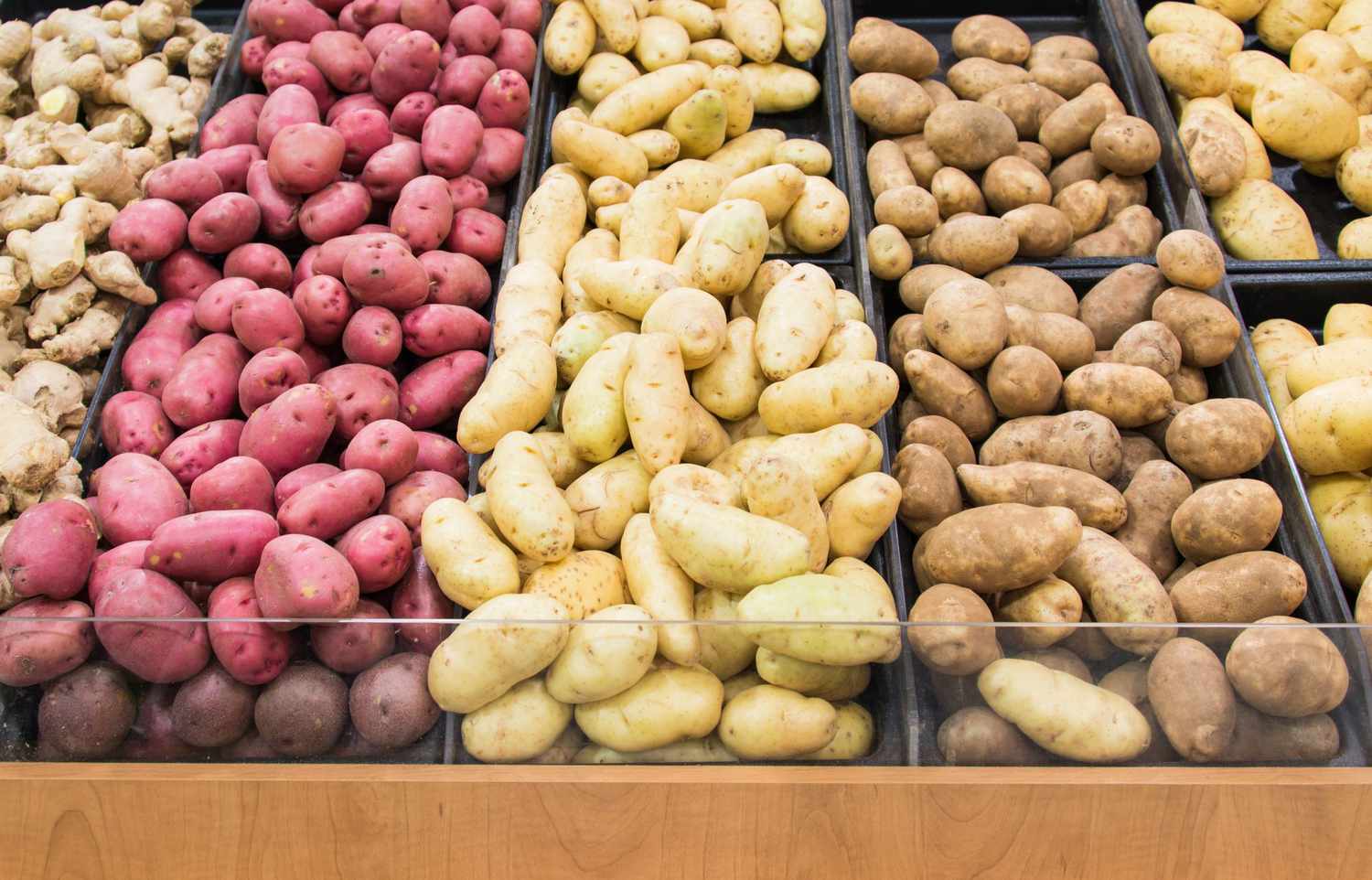The type of potatoes you use in your recipe can make or ruin it. The humble potato may appear to be a perfect ingredient for all dishes, but it isn’t. The flavor, texture, and level of moisture in each type determine its performance.
In this article, we’ll look at the most popular potato varieties to help you decide which one is best suited to specific cooking methods. If your mashed potatoes are sticky or your fries lack the crisp you desire, your potato selection could be to blame.
Understanding Potato Textures
The two main types of potato are:
- Starchy (highly starchy, low moisture)- Ideal for baking or frying and fluffy mashed potatoes.
- Waxy (Low in starch but high in moisture)- Best for boiling and roasting.
- Multi-purpose – A medium between waxy and starchy that is versatile for many recipes.
Russet Potatoes, The King Of Baking And Frying
The russet, also called Idaho potatoes, is a classic, starchy potato variety. It has a brown, thick skin and a fluffy, dried interior. They are ideal for:
- Baked potatoes have crisp skin with fluffy insides
- Crispy outside and soft interior french fries
- Mashed potatoes, especially when they need to be light and airy
The high starch content of these potatoes means that they will easily dissolve when they are boiled. This makes them unsuitable for soups or salads.
Yukon Gold – The All-Purpose All-Star
There are several applications for Yukon Golds. The thin golden skin of these potatoes, combined with their creamy, buttery flavor, makes them a popular choice for the versatility they offer in cooking. Because of their moderate starch, they are ideal for:
- Mashing is best if you are looking for a velvety texture.
- Roasting as they brown nicely, and retain their form
- Grains or casseroles with soft layers and still some structure
Because of their naturally rich flavor, you can often reduce the amount added butter or heavy cream. This allows for a healthier meal without sacrificing flavour.
Red Potatoes – Best For Salads, Boiling Or Roasting
Red potatoes come in small, round shapes and are vibrant. They also have a slightly sweet, waxy texture. These potatoes keep their shape very well and are ideal for:
- Potato salads won’t become mush
- Soups and stews where firm potato chunks are needed
- Sides boiled or steamed, especially when paired up with herbs and a drizzle of olive oil
The low starch in red potatoes makes them unsuitable for mashing. They become thick and sticky if overworked.
Gourmet And Flavorful Potatoes
Small, thin fingerling potatoes come in a range of shades, such as yellow, red, or purple. The rich taste and waxy texture make them the chef’s choice for rustic and elegant dishes.
Try fingerlings whenever:
- Roasting a chicken with herbs and garlic is a dish
- Add warm salads to your menu, especially when you use vinaigrettes
- They are ideal for grilling or pan-frying because of their dense flesh and thin skin.
The variety is less well-known than the fingerlings. However, they are delicious if cooked in a simple way.
Purple Potatoes With Their Colorful Twist And Nutritional Benefits
Purple potatoes, also called Peruvian or blue potatoes, are not just eye-catching–they’re packed with antioxidants, particularly anthocyanins, which give them their deep hue. The medium starch and slightly nutty flavor make them a great addition to:
- Roasted vegetable medleys for vibrant color
- Mashed potatoes are a creative way to present potatoes
- Baked chippy’s, which maintain their color even after baking
While they work well in many dishes, their best color is when they can be seen.
How To Choose The Right Potatoes For The Right Dish
If you want to make the most of your cooking, it’s important to choose the right variety. This is because the type will affect the taste, texture, and moisture. If you use the wrong type, your dish may be disappointing or fail. Too much potato crumbles will ruin a creamy dish. A fry that is made with a potato that has a waxy coating may become limp and oily.
Here’s a quick recap:
- For mashing: Russet or Yukon Gold
- For roasting: Yukon Gold, Red, or Fingerling
- For salads: Red or Fingerling
- For frying: Russet
- For color and nutrition: Purple potatoes
Final Thoughts
The potatoes are more complex than most people realize. Understanding how the different types of potatoes behave will help you improve your cooking skills, avoid common mistakes, and enjoy the versatility and variety of this popular ingredient. When planning your next meal, be sure to select the right potato. It may make all the difference.
